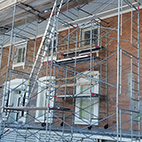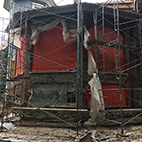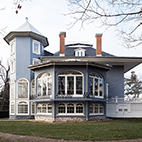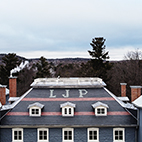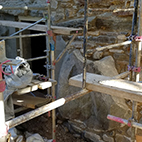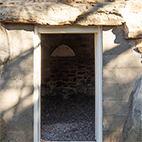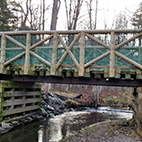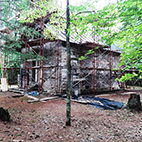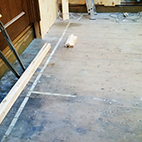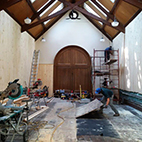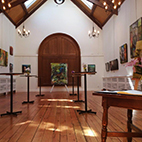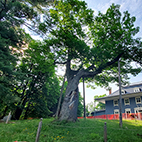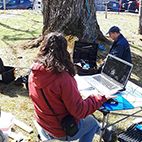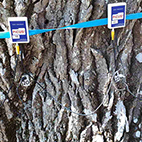
Investment program in Parks Canada federal infrastructures
Manoir Papineau National Historic Site
Giving the past a future
The Government of Canada has invested $4.2 billion to carry out infrastructure projects at heritage sites and visitor facilities, as well as on waterways and roads within national historic sites, national parks and national marine conservation areas across Canada
The Manoir Papineau National Historic Site has received unprecedented funding of more than $5.9 million from this program to carry out major work to protect it for decades to come and give future generations the opportunity to enjoy the richness of our history.
The manor house
Louis-Joseph Papineau built his manor house between 1848 and 1850 on the promontory formed by Cape Bonsecours, ensuring an exceptional panoramic view. The manor house later underwent a series of major changes when it became the Seigniory Club, from 1929 to 1970.

Over the years, the owners of the manor house added layers of different colours of plaster, which was evident in multiple places where the top layer had begun to peel off. As a result, we repaired the plaster on all of the walls in order to make it uniform and bring the manor house back to a colour matching the one initially chosen by Louis-Joseph Papineau.
In addition to repairs to the plaster and woodwork, the replacement of the roof covering made it possible to restore an important distinctive sign to the manor house from the era of its designer, Louis-Joseph Papineau. As he had designed it at the time, his initials can once again be seen on the slate tiles of the roof.
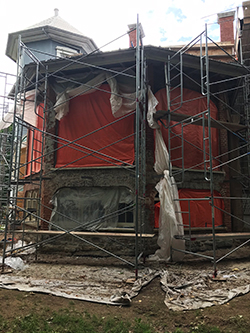
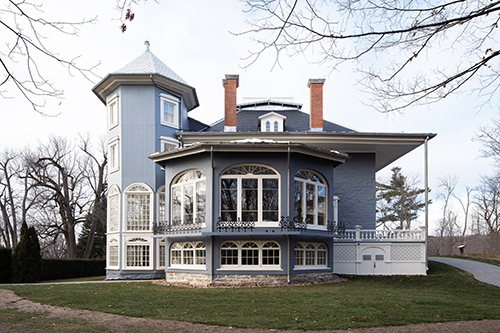
The section of the manor house containing the Salon Bleu and the orangery was also revitalized.
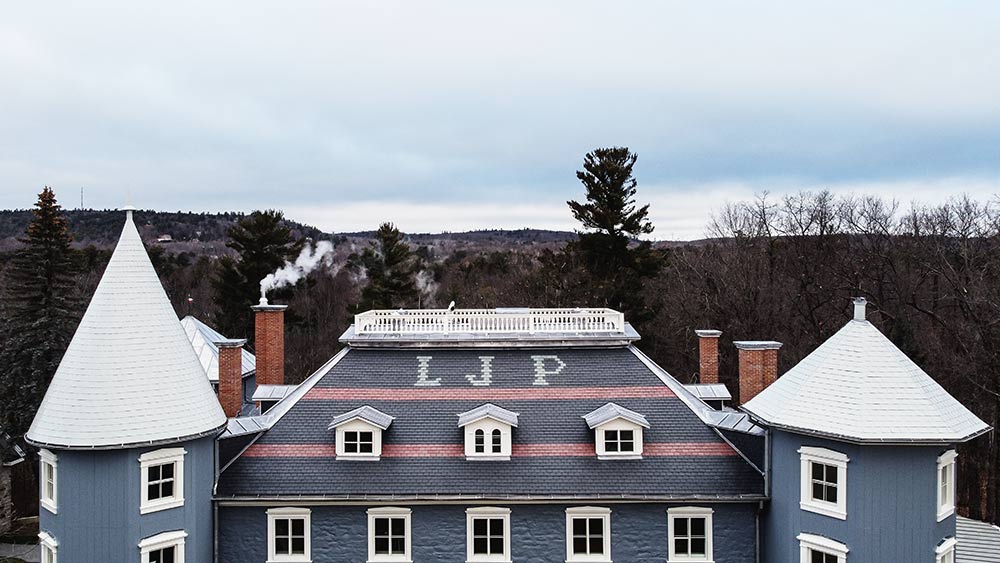
During the construction of his manor house, Louis-Joseph Papineau had his initials inscribed on the roof. The restoration brought back this distinctive sign.
The granary
Built in 1855, the granary is distinguished by its "country church" look. It is a brick structure built on a masonry foundation.

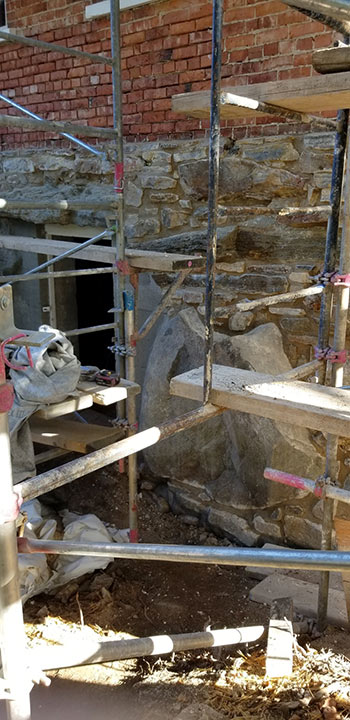
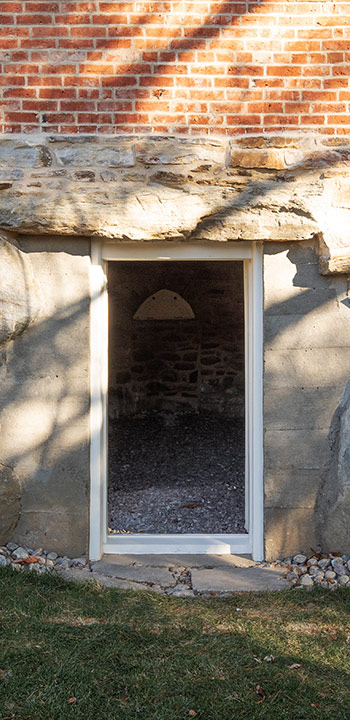
We stabilized the foundations and repaired the masonry.
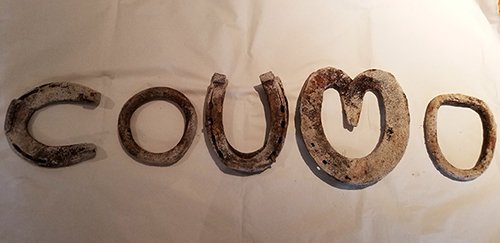
During the work, we discovered old horseshoes in the walls.
The Family Museum
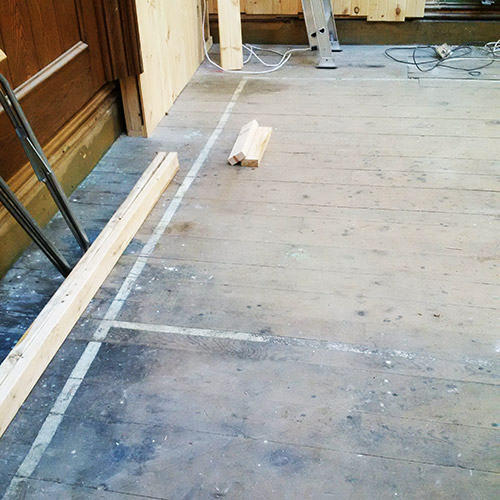
In 1880, on the initiative of Amédée Papineau, this building was constructed to serve as a museum containing a collection of family portraits and many travel souvenirs.
In 2016, in addition to work to stabilize its foundations, the Family Museum was renovated to serve as an exhibition and reception hall.
A reminder of another era, the lines of a badminton court from the time when the museum was used as a gymnasium.
Major restoration work has been performed to transform the place into...
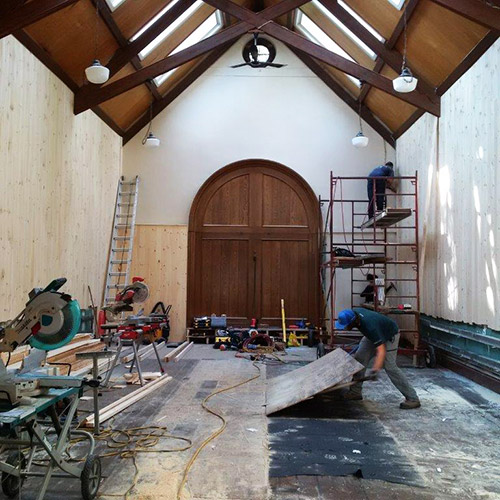
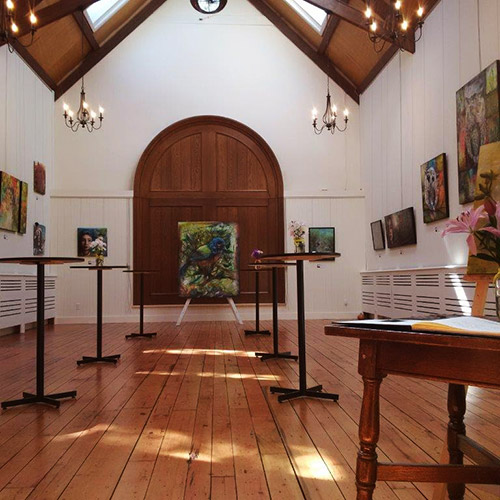
...a perfect room to hold events and exhibitions.
The manor house road
The manor house road connects the visitors' parking lot to the manor house. For safety reasons, we rebuilt the wooden bridge over Papineau Creek.
The old bridge had weaknesses and was completely rebuilt.
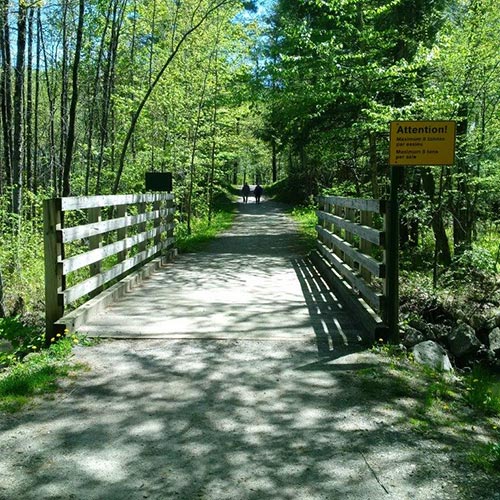
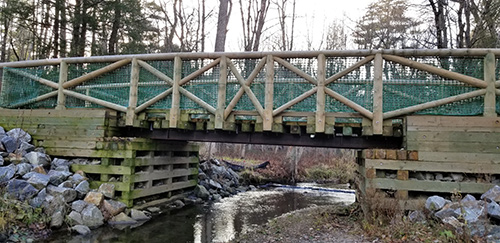
The Papineau funeral chapel can be found on the manor house road. The National Trust for Canada, which is responsible for this building located on the Papineau manor estate, undertook its restoration in 2020.
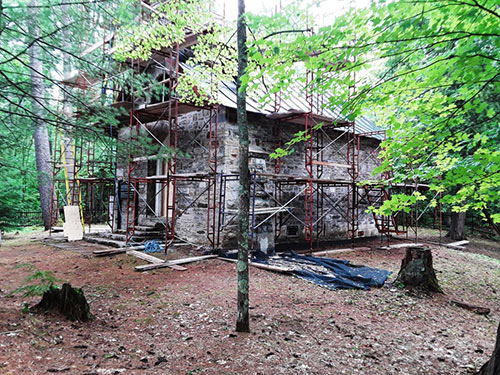
The oak tree
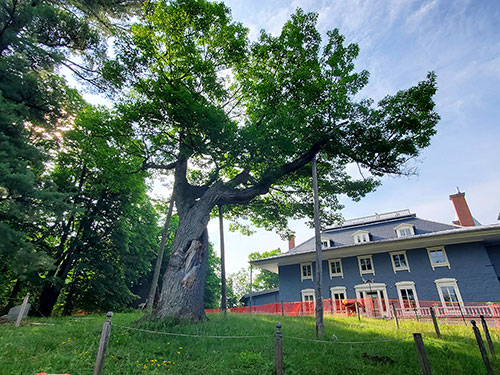
In front of the manor stands a majestic oak tree. It is estimated to be between 200 and 300 years old; it was already a mature tree when Papineau had his manor built. In recent years, interventions have been necessary to protect it.
We have recently carried out extensive tests of its trunk and branches to assess its health and to adjust the support crutches and flexible guy wires so that it can watch over the estate for many years to come..
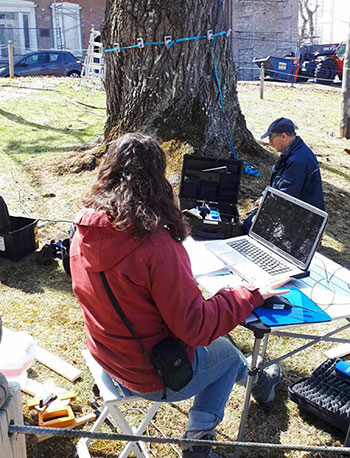
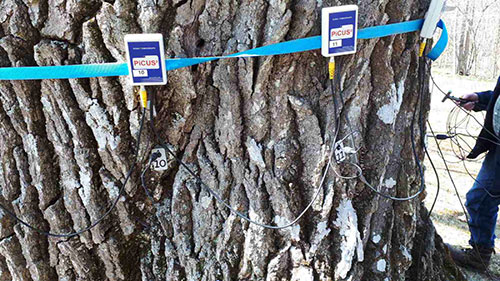
Thanks to the evolution of science, it is now possible to carry out tomography tests to know the density of a trunk without causing injury to it.
We also try to ensure its progeny by harvesting and growing acorns. Small oak trees will be distributed on the Petite-Nation territory and planted near our old oak tree.
Image gallery
- Date modified :
